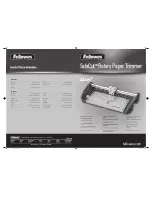
When compiling the project, make sure the target platform is Any CPU. Once the DLL is compiled (release or debug, both work),
it should be placed in the appropriate directory on the instrument. Restart the instrument application, and the plugin is ready to
use like any existing math operator.
MATLAB custom functions
The Custom Analysis Interface for use with MATLAB provides two options for writing MATLAB custom analysis functions: a basic
function interface and a more advanced class-based interface. Both types are available in demo form on the instrument in C:
\Users\Public\Tektronix\Plugins\Math\MATLAB.
Using the basic Function interface to create MATLAB functions. The function interface uses a simple signature: function
[ output ] = exampleProcessingFunction( firstTime, varargin ) Your function should take two inputs: a Boolean that indicates
whether or not this is the first time the function has been called and a variable length array. Put the results that you want the
instrument to display into the output variable of the same length as the input array.
If this is the first time the function has been called as part of the math expression, firstTime is true. In this case, the varargin array
consists of the record length and the sample rate:
recordLength = varargin{1}; sampleRate = varargin{2}; and the output is expected to be true: output = true;
If you have any one time processing, such as filter creation, do this when firstTime is true. If you want to have variables from a
previous execution of the function available, you should mark the variables persistent. See the examples for more information.
Note that persistent variables are automatically cleared before the first execution of the function.
If this is not the first time the function has been called, then firstTime is false and varargin will consist of the waveform inputs. The
math expression may have one or two waveform inputs to the MATLAB function:
input1 = varargin{1}; if numel(varargin) == 2 input2 = varargin{2}; end
From here you can do any computations you want and put the results into the output. Your MATLAB function can use any
features available in MATLAB or installed toolboxes to perform its calculations. Note that the output must have the same length
as the inputs. If your output vector is shorter, zero out the remaining points.
Oscilloscope reference
714
DPO70000SX, MSO/DPO70000DX, MSO/DPO70000C, DPO7000C, and MSO/DPO5000B Series
Summary of Contents for DPO2304SX
Page 1: ...Tektronix Digital Phosphor Oscilloscopes Printable Help P077006219 077 0062 19...
Page 2: ......
Page 3: ...Tektronix Digital Phosphor Oscilloscopes Printable Help www tek com 077 0062 19...
Page 32: ...Introduction xxviii DPO70000SX MSO DPO70000DX MSO DPO70000C DPO7000C and MSO DPO5000B Series...
Page 130: ...Cursor setups 98 DPO70000SX MSO DPO70000DX MSO DPO70000C DPO7000C and MSO DPO5000B Series...
Page 198: ...MagniVu setup 166 DPO70000SX MSO DPO70000DX MSO DPO70000C DPO7000C and MSO DPO5000B Series...
Page 212: ...Display setups 180 DPO70000SX MSO DPO70000DX MSO DPO70000C DPO7000C and MSO DPO5000B Series...
Page 300: ...Math setups 268 DPO70000SX MSO DPO70000DX MSO DPO70000C DPO7000C and MSO DPO5000B Series...
Page 408: ...MyScope setups 376 DPO70000SX MSO DPO70000DX MSO DPO70000C DPO7000C and MSO DPO5000B Series...
Page 510: ...Trigger setups 478 DPO70000SX MSO DPO70000DX MSO DPO70000C DPO7000C and MSO DPO5000B Series...
Page 548: ...Vertical setups 516 DPO70000SX MSO DPO70000DX MSO DPO70000C DPO7000C and MSO DPO5000B Series...
Page 605: ...Utilities DPO70000SX MSO DPO70000DX MSO DPO70000C DPO7000C and MSO DPO5000B Series 573...
Page 606: ...Utilities 574 DPO70000SX MSO DPO70000DX MSO DPO70000C DPO7000C and MSO DPO5000B Series...
Page 920: ...Index 888 DPO70000SX MSO DPO70000DX MSO DPO70000C DPO7000C and MSO DPO5000B Series...
















































